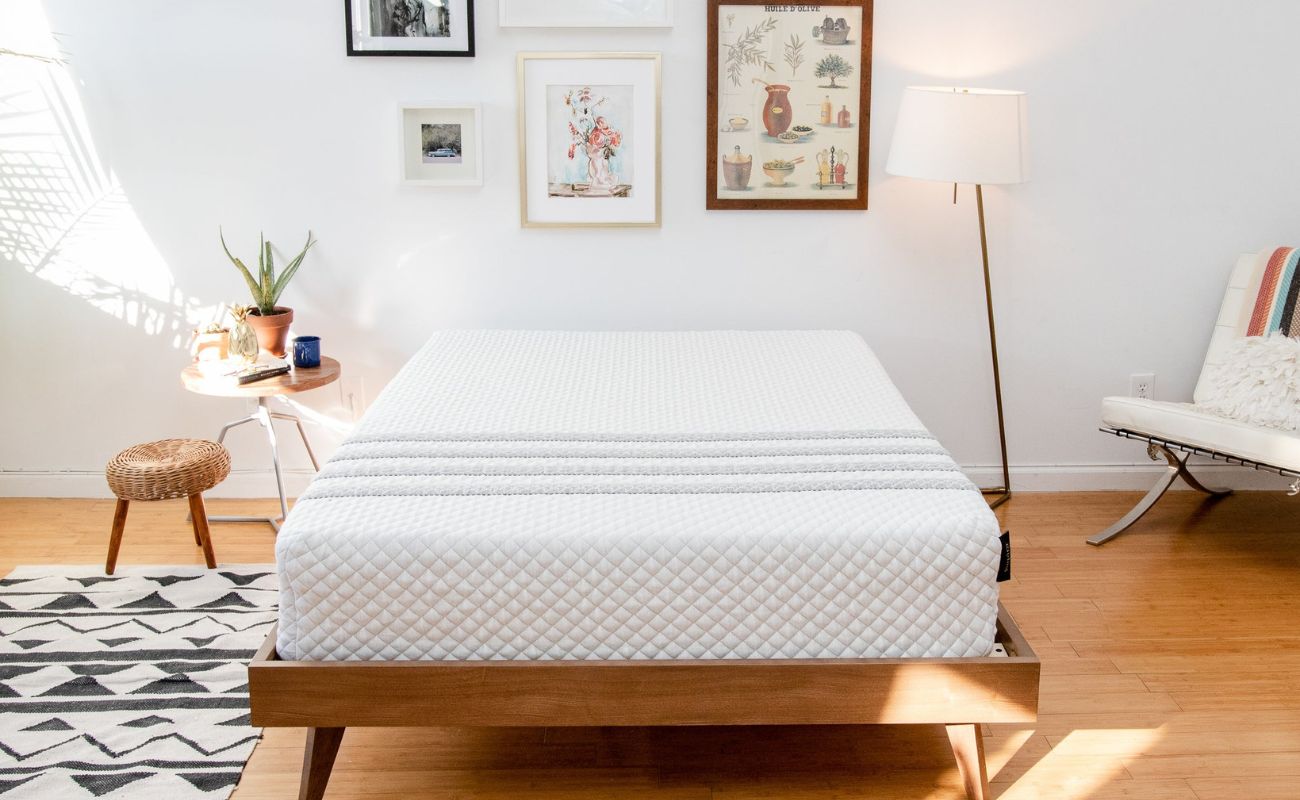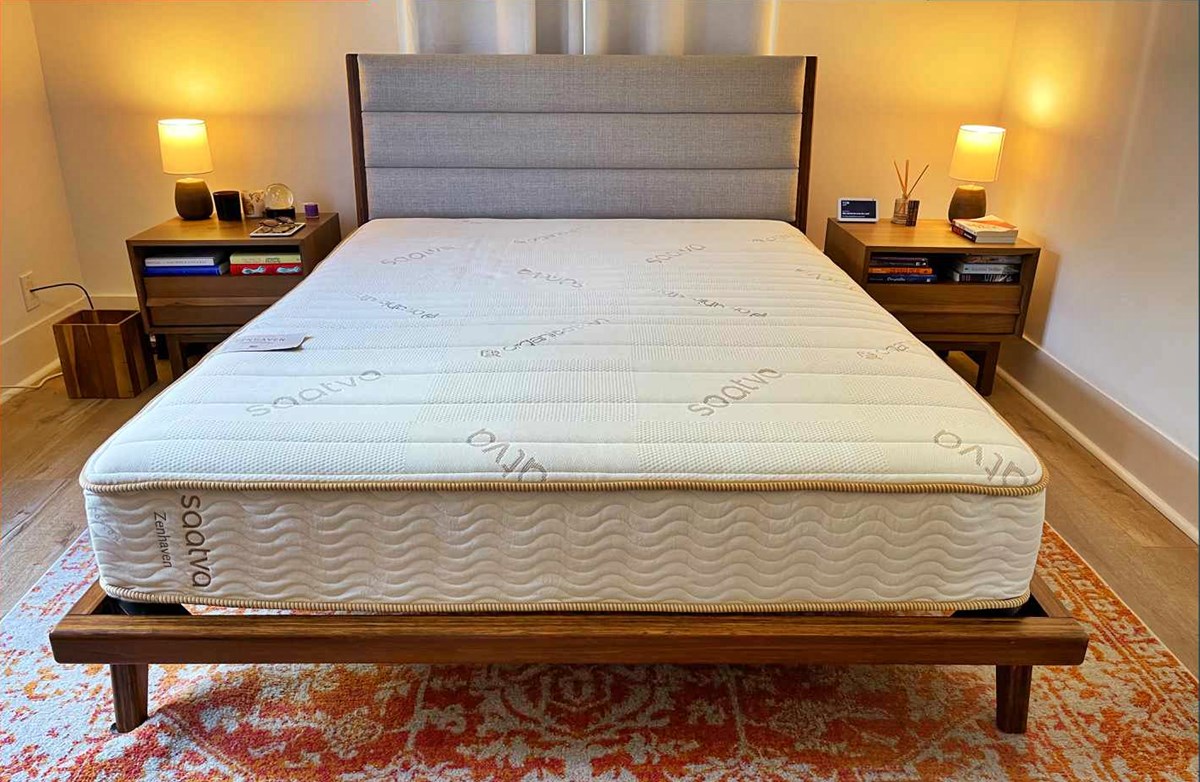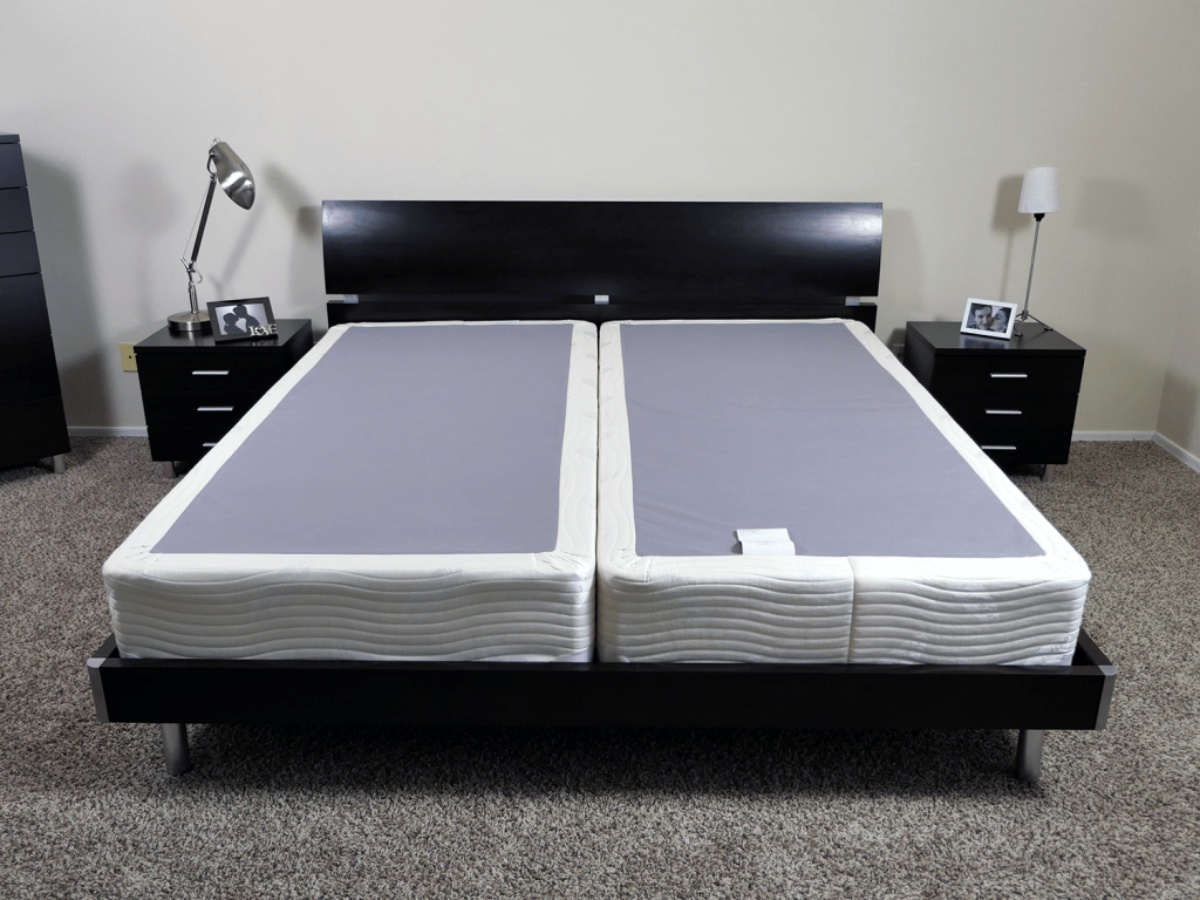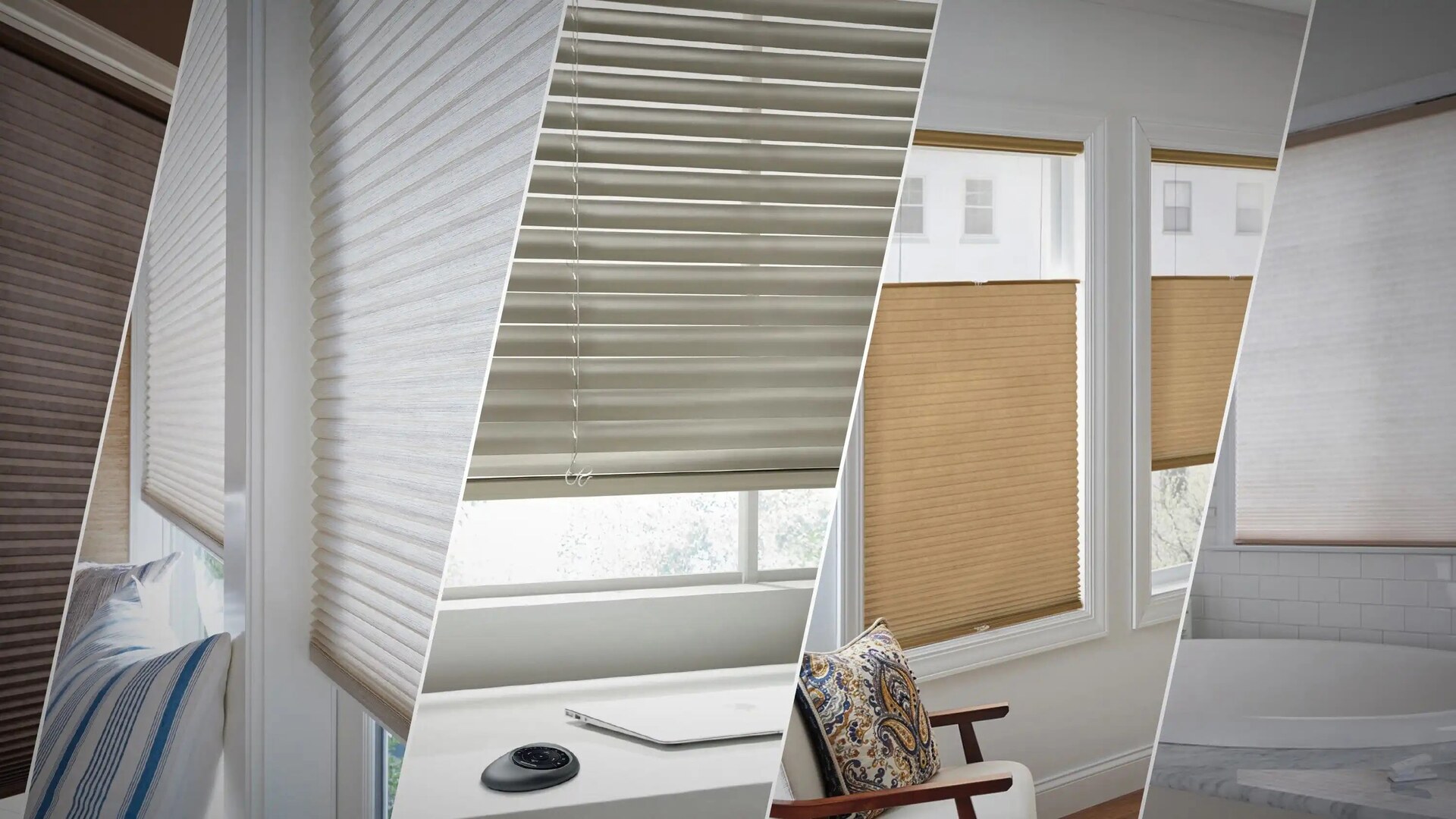Home>Furniture>Bedroom Furniture>What Type Of Mattress Is Best For Degenerative Disc Disease
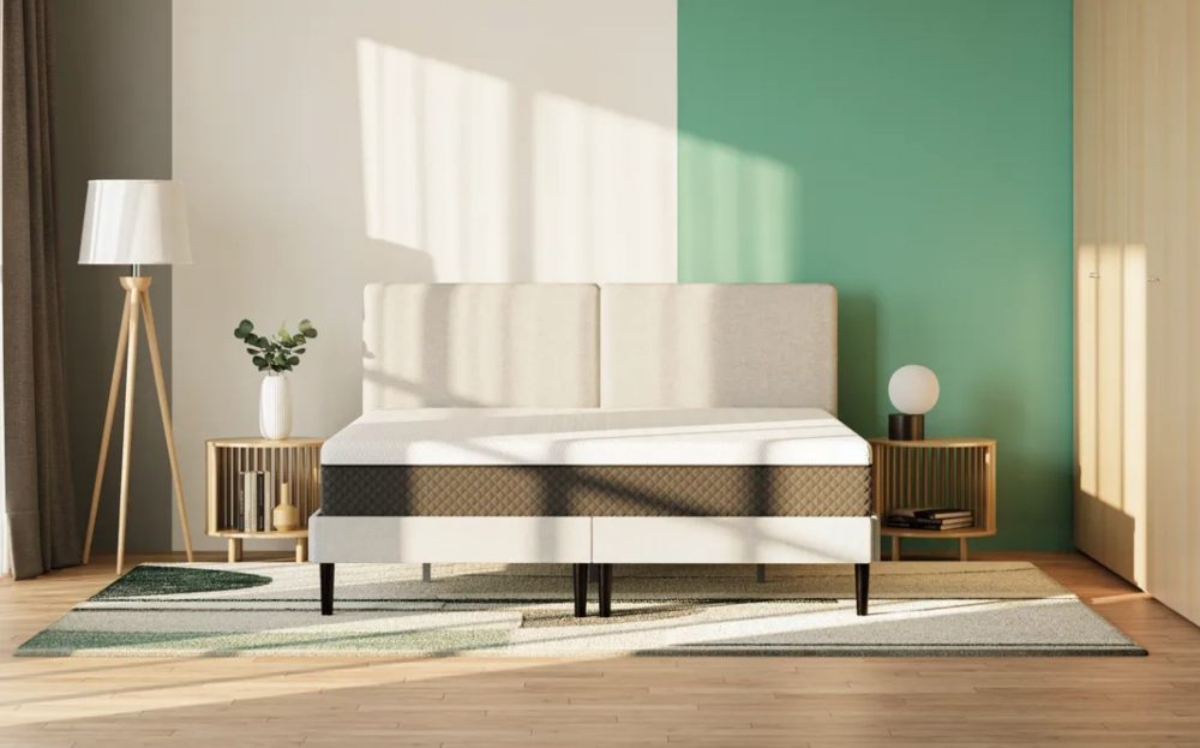

Bedroom Furniture
What Type Of Mattress Is Best For Degenerative Disc Disease
Modified: November 1, 2024
Find the perfect bedroom furniture for degenerative disc disease! Discover the best type of mattress to alleviate pain and promote better sleep.
(Many of the links in this article redirect to a specific reviewed product. Your purchase of these products through affiliate links helps to generate commission for Storables.com, at no extra cost. Learn more)
Introduction
When it comes to getting a good night’s sleep, having the right mattress is crucial. This is especially true for individuals dealing with degenerative disc disease. Degenerative disc disease is a common condition that affects the cushioning discs between the vertebrae in the spine. It can cause chronic pain, stiffness, and limited mobility, making it difficult to find comfort and rest while sleeping.
For those with degenerative disc disease, finding a mattress that provides proper support, alignment, and pressure relief is essential. A mattress that is too firm can aggravate pain, while a mattress that is too soft may not offer adequate support. That’s why it’s crucial to understand the importance of choosing the right type of mattress specifically designed for individuals with degenerative disc disease.
In this article, we will explore the various types of mattresses that are best suited for individuals with degenerative disc disease. We will discuss the unique features of each type and provide tips on how to choose the right mattress for your needs. By the end of this article, you will have a better understanding of what to look for in a mattress and be well-equipped to make an informed decision that will enhance your sleep quality and overall well-being.
Key Takeaways:
- The right mattress is crucial for individuals with degenerative disc disease, providing support, alignment, and pressure relief to improve sleep quality and alleviate pain and discomfort.
- Memory foam, latex, innerspring, and hybrid mattresses, along with adjustable beds, offer unique features tailored to the specific needs of individuals with degenerative disc disease. Consulting with healthcare professionals and testing different options are vital for making an informed decision.
Read more: What Is The Best Type Of A Mattress
Understanding Degenerative Disc Disease
Degenerative disc disease is a condition that primarily affects the intervertebral discs of the spine. These discs act as shock absorbers between the vertebrae, providing cushioning and flexibility. Over time, due to age, wear and tear, or injury, these discs can degenerate, leading to chronic pain and discomfort.
The most common symptoms of degenerative disc disease include back pain, neck pain, stiffness, and reduced range of motion. The pain may worsen with movement, bending, or lifting heavy objects. It can also radiate to the arms or legs, causing numbness, tingling, or weakness.
While degenerative disc disease is a normal part of the aging process, certain lifestyle factors can increase the risk of developing this condition. These factors include obesity, smoking, repetitive heavy lifting, physical inactivity, and poor posture. Additionally, genetics and family history can also play a role in the development of degenerative disc disease.
Diagnosing degenerative disc disease usually involves a physical examination, medical history review, and imaging tests such as X-rays, MRI, or CT scans. Treatment options for degenerative disc disease can range from conservative approaches such as physical therapy, pain management, and lifestyle modifications, to more invasive treatments like surgery.
One crucial aspect of managing degenerative disc disease is ensuring proper rest and sleep. Adequate sleep is essential for the body’s natural healing process and can help alleviate pain and discomfort. That’s why having the right mattress is vital to support the spine, reduce pressure on the discs, and promote a restful night’s sleep.
Importance of Mattress for Degenerative Disc Disease
When you have degenerative disc disease, finding the right mattress is essential for several reasons. Firstly, a proper mattress can provide the necessary support and alignment for your spine, helping to alleviate pain and discomfort. It can distribute your body weight evenly, reducing pressure on the affected discs and allowing them to rest and heal during sleep.
Secondly, a good mattress can help improve your sleep quality, which is crucial for managing degenerative disc disease. Chronic pain and discomfort can disrupt sleep patterns, causing restless nights and waking up feeling tired and achy. By choosing a mattress that relieves pressure points and promotes proper spinal alignment, you can enhance your sleep and wake up feeling refreshed.
Another important factor to consider when choosing a mattress for degenerative disc disease is motion isolation. Many individuals with this condition experience increased sensitivity to movement, and even slight disturbances can trigger pain. A mattress with good motion isolation can absorb movement, minimizing motion transfer when your partner moves or gets out of bed, allowing you to sleep undisturbed.
Furthermore, an appropriate mattress can also help improve your overall comfort while sleeping. It can provide adequate cushioning and support to alleviate pressure on sensitive areas such as the hips, shoulders, and lower back. This can prevent the development of pressure sores or exacerbation of pain, allowing you to enjoy more restful and comfortable sleep.
Lastly, investing in a high-quality mattress designed for individuals with degenerative disc disease can make a significant difference in the long term. A durable and supportive mattress can maintain its shape and structural integrity over time, ensuring that you continue to receive the necessary support for your spine as your condition progresses.
Overall, a mattress tailored to the needs of individuals with degenerative disc disease can profoundly impact your sleep quality, pain management, and overall well-being. It is worth taking the time to research and invest in a mattress that provides the necessary support, comfort, and durability to accommodate your specific needs.
Factors to Consider When Choosing a Mattress
Choosing the right mattress for degenerative disc disease involves considering several important factors to ensure optimal support and comfort. Here are some key factors to keep in mind:
- Firmness: Finding the right level of firmness is crucial. A mattress that is too firm can create pressure points and exacerbate pain, while a mattress that is too soft may not provide adequate support. A medium-firm mattress is often recommended as it can offer a balance of comfort and support for individuals with degenerative disc disease.
- Support: Look for a mattress that provides proper spinal alignment. It should support the natural curvature of your spine and promote neutral alignment. This can help alleviate pressure on the discs and muscles, reducing pain and discomfort.
- Material: Consider the materials used in the mattress. Memory foam, latex, and hybrid mattresses are popular choices for individuals with degenerative disc disease as they offer excellent support and pressure relief. Each material has unique characteristics that can cater to different preferences and needs.
- Pressure Relief: Look for a mattress that offers good pressure relief, especially in areas prone to pain, such as the hips, shoulders, and lower back. This can help minimize discomfort and allow for a more restful sleep.
- Edge Support: Pay attention to the edge support of the mattress. A mattress with reinforced edges can provide stability when getting in and out of bed and prevent sagging, enhancing overall comfort and longevity.
- Motion Isolation: If you sleep with a partner, consider a mattress with good motion isolation. This feature can minimize disturbances caused by movement, ensuring uninterrupted sleep for both you and your partner.
- Temperature Regulation: Some mattresses have cooling properties or moisture-wicking materials that can help regulate body temperature during sleep. This can be beneficial if you tend to sleep hot or live in a warm climate.
- Durability: Look for a mattress that is durable and built to withstand the test of time. A mattress with good longevity will continue to provide the necessary support and comfort as your condition progresses.
Keep in mind that individual preferences can vary, so it’s essential to test different mattresses and consult with your healthcare provider or an expert in bedding to find the best option for your specific needs. Understanding these factors will help you make an informed decision and choose a mattress that promotes pain relief, restful sleep, and overall well-being.
Types of Mattresses Suitable for Degenerative Disc Disease
When it comes to choosing a mattress for degenerative disc disease, there are several types that are well-suited to provide the necessary support and comfort. Let’s explore some of the most popular types:
Read more: What Type Of Mattress Is Best For Sciatica
1. Memory Foam Mattresses:
Memory foam mattresses have gained popularity in recent years due to their ability to contour to the body’s shape, providing excellent pressure relief and support. They adapt to your body’s curves, evenly distributing weight and reducing pressure on the spine and sensitive areas. The memory foam material also absorbs motion, making it an ideal choice for individuals who are easily disturbed by their partners’ movements during sleep.
2. Latex Mattresses:
Latex mattresses are known for their responsiveness and durability. They offer a balance of support and comfort, while also providing exceptional pressure relief. Latex naturally contours to the body, allowing for proper alignment and reducing strain on the spine. Additionally, latex mattresses are hypoallergenic and resistant to dust mites, mold, and mildew, making them a great choice for individuals with allergies or sensitivities.
3. Innerspring Mattresses:
Innerspring mattresses are a traditional option that features a support system of steel coils. They provide a good level of support and allow for airflow, keeping the mattress cool during sleep. For individuals with degenerative disc disease, an innerspring mattress with a thicker gauge and additional comfort layers can offer the necessary cushioning and support to alleviate pressure on the spine.
4. Hybrid Mattresses:
Hybrid mattresses combine the benefits of different materials, typically pairing innerspring coils with layers of memory foam or latex. This combination provides the support and responsiveness of the coils, along with the comfort and pressure relief of the foam or latex layers. Hybrid mattresses are often a popular choice for those with degenerative disc disease as they offer a good balance of support, comfort, and durability.
When deciding on the best type of mattress, it’s important to consider personal preferences, comfort levels, and specific needs. Take the time to try out different options and consult with healthcare professionals or bedding experts for personalized recommendations.
Remember, while these mattress types can be beneficial for individuals with degenerative disc disease, everyone’s condition and comfort requirements may vary. Ultimately, choosing a mattress that provides the proper support, alignment, and pressure relief will help alleviate pain, promote restful sleep, and enhance overall well-being.
Read more: What Type Of Mattress Is Best For Kids
Memory Foam Mattresses
Memory foam mattresses have gained widespread popularity in recent years due to their ability to provide excellent support and pressure relief. These mattresses are made from a high-density polyurethane foam that reacts to body heat and weight, allowing it to contour to the shape of your body. This feature makes memory foam mattresses an excellent choice for individuals with degenerative disc disease.
One of the key benefits of memory foam mattresses is their ability to evenly distribute body weight across the surface, thereby reducing pressure points on the spine. This feature is crucial for individuals with degenerative disc disease, as it helps alleviate pain and discomfort associated with this condition. By conforming to your body’s contours, memory foam mattresses provide targeted support and promote proper spinal alignment, allowing for a more comfortable and restful sleep.
Another advantage of memory foam mattresses is their motion isolation properties. If you share the bed with a partner, memory foam can absorb and minimize the transfer of motion. This means that even if your partner moves during the night, you are less likely to feel the movement, allowing for less disruption and a better quality of sleep.
Memory foam mattresses also have the added benefit of being hypoallergenic. The dense nature of the foam makes it resistant to allergens such as dust mites, mold, and pet dander. This is particularly advantageous for individuals with allergies or respiratory conditions, as it helps create a cleaner and healthier sleep environment.
When choosing a memory foam mattress for degenerative disc disease, consider the following factors:
- Firmness: Memory foam mattresses come in a range of firmness options. It’s important to find the right level of firmness that provides adequate support and comfort for your specific needs.
- Density: Higher-density memory foam mattresses generally offer better support and durability. Look for mattresses with a density of at least 4 pounds per cubic foot for maximum support.
- Thickness: The thickness of the memory foam layer can also affect the level of comfort and support. Thicker foam layers generally provide more cushioning and contouring.
- Cooling Technology: One drawback of some memory foam mattresses is the potential to retain heat. Look for memory foam mattresses that incorporate cooling technology, such as gel-infused foam or open-cell construction, to promote better temperature regulation during sleep.
- Warranty and Trial Period: Consider the warranty and trial period offered by the manufacturer. This allows you to test the mattress and ensure it meets your comfort and support needs. A longer trial period and a generous warranty demonstrate the manufacturer’s confidence in their product.
Remember, the ideal memory foam mattress for degenerative disc disease may vary depending on individual preferences and specific needs. Take the time to research and try out different options to find the one that provides the best combination of support, comfort, and pain relief for your condition.
Latex Mattresses
Latex mattresses have gained popularity among individuals seeking a supportive and sustainable sleep surface. These mattresses are made from natural latex or a blend of natural and synthetic latex. They offer several benefits that make them suitable for individuals with degenerative disc disease.
One of the key advantages of latex mattresses is their ability to provide optimal support and pressure relief. Latex has a unique responsiveness that allows it to contour to the body’s shape, promoting proper alignment of the spine. This helps reduce pressure on the discs and provides relief for individuals suffering from back or neck pain associated with degenerative disc disease.
Latex mattresses also offer excellent durability and longevity. They are known for their resilience and ability to maintain their shape and support for many years. This makes them a sound investment for individuals with degenerative disc disease, as a quality latex mattress will continue to provide the necessary support and comfort as the condition progresses.
Another significant advantage of latex mattresses is their natural hypoallergenic properties. Latex is inherently resistant to dust mites, mold, and mildew, making it an ideal choice for individuals with allergies or sensitivities. This feature can promote a cleaner and healthier sleep environment, reducing the risk of triggering respiratory issues or allergies during sleep.
When considering a latex mattress for degenerative disc disease, keep the following factors in mind:
- Firmness: Latex mattresses typically come in different firmness levels, ranging from soft to firm. It’s important to choose a firmness level that provides adequate support while still offering comfort and pressure relief. Medium-firm mattresses are often recommended for individuals with degenerative disc disease.
- Material Type: Latex mattresses are available in natural latex, synthetic latex, or a combination of both. Natural latex mattresses are typically more expensive but offer superior quality and durability. Synthetic latex mattresses can be a more affordable option but may lack some of the natural properties.
- Construction: Latex mattresses can be constructed in different ways, including Dunlop and Talalay methods. Dunlop latex is more substantial and firmer, while Talalay latex is softer and more responsive. Each method has its own unique feel, so it’s worth trying out different constructions to find the one that suits you best.
- Temperature Regulation: Latex mattresses have natural breathability and airflow properties that help regulate temperature during sleep. Look for mattresses with added features like breathable covers or pinhole patterns that enhance air circulation, keeping you cool and comfortable throughout the night.
- Environmental Considerations: If sustainability is important to you, consider choosing a latex mattress made from natural, organic, or eco-friendly materials. These mattresses are produced using environmentally responsible methods and are free from harmful chemicals.
It is essential to try out different latex mattresses and consider individual preferences and comfort needs when making a final choice. By selecting a latex mattress that offers proper support, pressure relief, and durability, you can improve your sleep quality and manage the symptoms of degenerative disc disease more effectively.
Innerspring Mattresses
Innerspring mattresses are a traditional and widely recognized type of mattress characterized by their support system of steel coils or springs. These mattresses have been popular for many years and offer several features that make them suitable for individuals with degenerative disc disease.
One of the primary benefits of innerspring mattresses is their excellent support and firmness. The coil system provides a stable and sturdy base that helps align the spine and distribute body weight evenly. This can help alleviate pressure on the discs and promote proper spinal alignment, reducing pain and discomfort associated with degenerative disc disease.
Innerspring mattresses also offer good airflow and breathability, which can help regulate body temperature during sleep. The gaps between the coils allow for air circulation, preventing heat buildup and promoting a cool and comfortable sleep environment.
In recent years, innerspring mattresses have evolved to include additional comfort layers, such as foam or pillow tops. These layers can provide extra cushioning and pressure relief, enhancing the overall comfort and support of the mattress. It’s essential to find the right balance between the support of the coils and the comfort layers to ensure optimal pain relief and relaxation.
When considering an innerspring mattress for degenerative disc disease, keep the following factors in mind:
- Firmness: Innerspring mattresses come in various firmness levels, ranging from soft to firm. It’s crucial to find the right level of firmness that provides adequate support while still offering comfort. Medium-firm mattresses are often recommended for individuals with degenerative disc disease.
- Coil Count: Consider the coil count or gauge of the mattress. Higher coil counts generally indicate enhanced support and durability. Moreover, a thicker gauge can provide more robust support, especially for individuals with a higher body weight.
- Comfort Layers: Look for innerspring mattresses with additional comfort layers, such as foam or pillow tops, to provide extra cushioning and pressure relief. These layers can enhance the overall comfort and help relieve pain associated with degenerative disc disease.
- Edge Support: Check for adequate edge support in the mattress. A reinforced perimeter can provide stability when getting in and out of bed and prevent sagging, ensuring uniform support across the entire sleep surface.
- Motion Isolation: Innerspring mattresses with pocketed or individually wrapped coils tend to isolate motion better, reducing disturbances caused by partner movement during sleep.
- Durability: Consider the durability and longevity of the mattress. Look for well-constructed innerspring mattresses with quality materials that can withstand regular use without sagging or losing support.
It is important to note that while innerspring mattresses can be suitable for individuals with degenerative disc disease, personal comfort preferences may vary. It is recommended to test different innerspring mattresses and consult with healthcare professionals or bedding experts to find the right one that provides optimal support, comfort, and pain relief for your specific needs.
Hybrid Mattresses
Hybrid mattresses are a popular choice for individuals seeking the benefits of multiple mattress types in one. These mattresses combine the support and durability of innerspring coils with the contouring comfort of foam or latex layers. This unique combination makes hybrid mattresses suitable for individuals with degenerative disc disease, providing a balance of support and pressure relief.
One of the primary advantages of hybrid mattresses is their ability to offer the best of both worlds. The innerspring coil system provides a sturdy and supportive base, promoting proper spinal alignment and reducing pressure on the discs. This can help alleviate pain and discomfort associated with degenerative disc disease.
On top of the coil system, hybrid mattresses feature comfort layers made of foam, latex, or a combination of both. These layers contour to the body’s curves, offering cushioning and pressure relief. The foam or latex conforms to the body, minimizing pressure points and providing targeted support where needed. This can enhance overall comfort during sleep and help manage pain and stiffness.
Hybrid mattresses also have good motion isolation properties, thanks to the individual coil system. Each coil is encased in a fabric pocket, allowing them to move independently. This helps reduce motion transfer, so even if your partner moves or gets out of bed, you’re less likely to be disturbed, allowing for a more restful sleep.
When considering a hybrid mattress for degenerative disc disease, keep the following factors in mind:
- Firmness: Hybrid mattresses come in different firmness levels, ranging from soft to firm. It’s essential to find the right level of firmness that provides adequate support and aligns with your comfort preferences. Medium-firm mattresses are often a good choice for individuals with degenerative disc disease.
- Coil Type: Pay attention to the type and design of the coil system used in the hybrid mattress. Pocketed coils or individually wrapped coils can provide better motion isolation and a more responsive feel compared to traditional innerspring coils.
- Comfort Layers: Consider the material and thickness of the comfort layers. Memory foam, latex, or gel-infused foam layers can provide optimal contouring and pressure relief for individuals with degenerative disc disease.
- Edge Support: Look for hybrid mattresses with reinforced edges to provide stability and prevent sagging. This can enhance the overall support and longevity of the mattress.
- Temperature Regulation: Some hybrid mattresses include cooling technologies such as gel-infused foam or breathable covers to help regulate body temperature and prevent overheating during sleep.
- Durability: Check the overall construction and quality of materials used in the hybrid mattress. A well-made hybrid mattress should be durable and maintain its support and comfort over time.
Ultimately, the choice of a hybrid mattress for degenerative disc disease depends on individual preferences and specific needs. It’s recommended to test different options and consult with healthcare professionals or bedding experts to find the hybrid mattress that offers the right combination of support, comfort, and pain relief for your condition.
Read more: What Are The Best Frisbee Golf Discs?
Adjustable Beds for Degenerative Disc Disease
In addition to choosing the right mattress, individuals with degenerative disc disease may benefit from considering an adjustable bed. Adjustable beds allow you to customize your sleeping position, providing targeted support and pain relief for your condition.
An adjustable bed consists of a base that can be raised or lowered to adjust the angle of your head, torso, and legs. This flexibility allows you to find the most comfortable position that relieves pressure on the spine and reduces discomfort associated with degenerative disc disease. Here are some benefits of using an adjustable bed:
1. Customized Positioning:
Adjustable beds allow you to elevate the head or foot of the bed to your desired angle. By raising the head of the bed, you can reduce strain on the neck and upper back, making it easier to breathe and alleviating symptoms of acid reflux. On the other hand, raising the foot of the bed can help relieve pressure on the lower back and promote circulation in the legs.
2. Pressure Relief and Spinal Alignment:
Adjustable beds enable you to find the optimal position that promotes proper spinal alignment and reduces pressure on the discs. By adjusting the bed to support the natural curves of your spine, you can alleviate pain and discomfort associated with degenerative disc disease. The ability to find the right angle for your body can provide targeted support and relief for specific pressure points.
3. Enhanced Comfort and Sleep Quality:
An adjustable bed allows you to find your ideal sleeping position, facilitating a more comfortable and restful sleep. This can be especially beneficial for individuals with degenerative disc disease, as it helps reduce the tossing and turning that often accompanies pain and discomfort. By finding the right position, you can minimize disturbances during sleep and wake up feeling more rejuvenated.
4. Additional Features:
Many adjustable beds offer extra features such as massage settings, lumbar support, and programmable memory positions. These features can further enhance your comfort and relaxation, providing additional pain relief and stress reduction. Consider your specific needs and preferences when selecting an adjustable bed with these added features.
It’s important to note that while adjustable beds can be beneficial for individuals with degenerative disc disease, they may not be suitable for everyone. It’s recommended to consult with your healthcare provider or a sleep specialist to determine if an adjustable bed is a suitable option for your specific condition and to get personalized recommendations.
When choosing an adjustable bed, consider factors such as the quality and durability of the base, ease of use, warranty, and customer reviews. Pairing an adjustable bed with a suitable mattress designed for degenerative disc disease will provide optimal support and comfort, helping you manage your condition and improve your overall sleep quality.
Tips for Choosing the Right Mattress
Choosing the right mattress for degenerative disc disease can significantly impact your sleep quality and overall comfort. Here are some tips to help you make an informed decision:
1. Consult with Healthcare Professionals:
Reach out to your healthcare provider or a specialist in spine health to get recommendations tailored to your specific needs. They can provide expert guidance based on your condition, preferences, and any underlying factors that may affect your choice of mattress.
2. Consider Your Comfort Preferences:
Everyone has different preferences for mattress firmness and feel. As individuals with degenerative disc disease may require a balance of support and cushioning, a medium-firm mattress is often recommended. However, choose a firmness level that feels best for your comfort needs.
3. Test the Mattress:
Visit mattress showrooms or take advantage of trial periods offered when purchasing online. Lie down on the mattress for at least 15 minutes to get a feel for its comfort and support. Test different sleeping positions to ensure it accommodates your needs and provides adequate pain relief.
4. Test Various Mattress Types:
Explore different mattress types such as memory foam, latex, innerspring, and hybrid mattresses to find the one that suits you best. Each type offers distinct features and benefits for individuals with degenerative disc disease.
5. Consider Motion Isolation:
If you share the bed with a partner who moves frequently during sleep, look for mattresses with good motion isolation. This feature minimizes disturbances, allowing both you and your partner to enjoy uninterrupted rest.
6. Pay Attention to Edge Support:
Check for proper edge support, especially if you tend to sit or sleep near the edge of the bed. The mattress should provide stability and prevent sagging to ensure consistent support across the entire sleep surface.
7. Look for Pressure Relief:
Consider mattresses with features that offer targeted pressure relief, such as memory foam or latex comfort layers. These materials can help alleviate pain and discomfort by conforming to your body’s shape and reducing pressure on sensitive areas.
8. Assess Temperature Regulation:
If you tend to sleep hot, look for mattresses with cooling properties such as gel-infused foam or breathable materials. These features can help regulate body temperature and provide a cooler sleep surface.
9. Consider Durability and Warranty:
Invest in a mattress that is built to last and comes with a generous warranty. A durable mattress ensures long-term support and comfort, while a warranty provides peace of mind and protection against defects.
By following these tips and considering your individual needs, you can make an informed decision and choose a mattress that provides optimal support, comfort, and pain relief for degenerative disc disease. Remember, everyone’s condition is unique, so it may take some trial and error to find the perfect mattress for you.
Conclusion
Choosing the right mattress is crucial for individuals dealing with degenerative disc disease. A mattress that provides proper support, alignment, and pressure relief can significantly improve sleep quality and alleviate pain and discomfort associated with this condition. Throughout this article, we have explored various types of mattresses suitable for degenerative disc disease, including memory foam, latex, innerspring, and hybrid mattresses. Each type offers unique features designed to cater to the specific needs of individuals with this condition.
Memory foam mattresses excel at contouring to the body’s shape, reducing pressure points and promoting proper spinal alignment. Latex mattresses provide excellent support, comfort, and durability while offering hypoallergenic properties. Innerspring mattresses offer a firm base and good airflow, promoting spinal alignment and providing a cooler sleep surface. Hybrid mattresses combine the benefits of both innerspring and foam or latex layers, offering a balance of support and cushioning.
Additionally, adjustable beds can provide further customization and pain relief, allowing for personalized positioning to reduce pressure on the spine and enhance comfort. Consulting with healthcare professionals, testing mattresses, and considering factors such as firmness, support, motion isolation, edge support, and durability are vital when selecting the right mattress for your needs.
Remember, individual preferences may vary, and it may take some time to find the perfect mattress that caters to your specific comfort and support requirements. It’s essential to test different options, take advantage of trial periods, and consult with healthcare professionals or bedding experts to make an informed decision.
By investing in a high-quality mattress that suits your needs, you can improve sleep quality, alleviate pain, and enhance overall well-being. A proper mattress, paired with good sleep hygiene practices and regular exercise, can significantly contribute to managing degenerative disc disease and promoting a restful and rejuvenating sleep experience.
Take the time to research, explore different options, and prioritize your comfort and support. With the right mattress, you can wake up each day feeling refreshed, recharged, and ready to face the day ahead.
Frequently Asked Questions about What Type Of Mattress Is Best For Degenerative Disc Disease
Was this page helpful?
At Storables.com, we guarantee accurate and reliable information. Our content, validated by Expert Board Contributors, is crafted following stringent Editorial Policies. We're committed to providing you with well-researched, expert-backed insights for all your informational needs.



